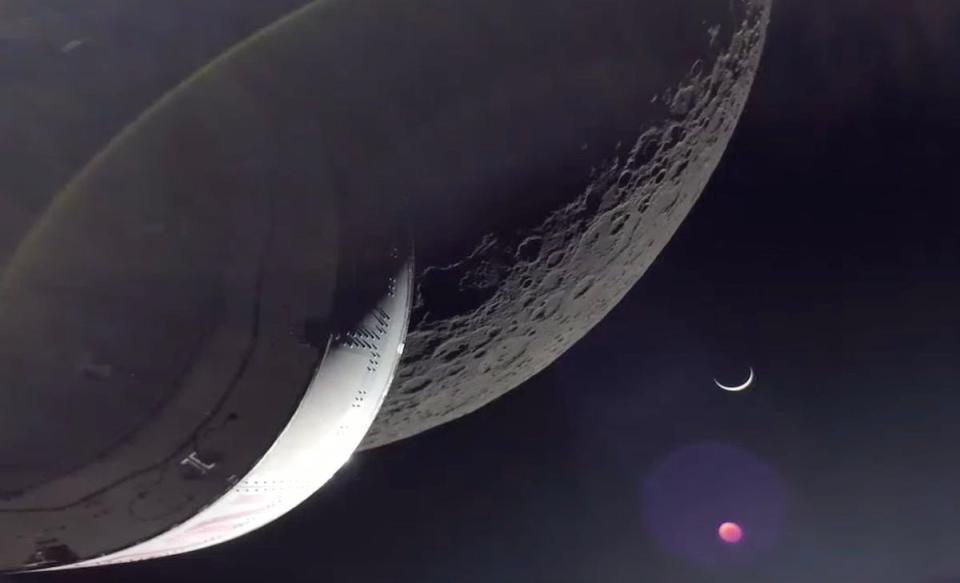When are humans going back to the moon? (It's sooner than you think)
It has been more than 50 years since the last people visited the moon. In the 1960s and 1970s, 24 astronauts flew around the moon, with 12 of them walking on the moon itself.
Since then, there have been dozens of robotic missions from various countries to the moon. They include an orbiting craft still sending back important data after 15 years in space, several lunar landers and one sample return mission.
Now NASA is preparing the next crews to return to the moon with a series of missions called Artemis. When will we get back to the moon and what other moon missions are on the drawing board?
Here's a look.
Why does the moon landing matter? You are using one of the Apollo 11 innovations right now
Lunar Reconnaissance Orbiter
The Lunar Reconnaissance Orbiter (LRO) is NASA’s long-running moon mission. Launched in 2009, LRO has been circling the moon creating 3D maps of the entire lunar surface. The resolution of its pictures is so detailed that LRO imaged the Apollo landing sites complete with instruments left behind and even the faint pathways trod by the astronauts who walked on the moon.
By mapping the moon with such detail, LRO aims to locate resources that future missions would be able to utilize such as water ice, which it detected deep in polar craters, as well as suggest future landing sites for humans to return to the moon.

Artemis: Back to the Moon
Traveling to the moon is exponentially more difficult than reaching the International Space Station (ISS). ISS typically orbits 200-250 miles above Earth. The moon is about 1,000 times farther or 240,000 miles away on average.
Sending astronauts back to the moon is the main goal of NASA’s Artemis program. The first mission, Artemis 1, launched in 2022, looped twice around the moon and returned to Earth after 25 days. The mission was uncrewed but did have three mannequins with sensors that NASA scientists could monitor throughout the journey. While in space, Artemis 1 sent back dramatic images of the gray, barren landscape of the moon with the blue-white Earth far in the distance.
Fact check: Lunar rover folded up into cargo bay for Apollo missions to moon
Artemis 2 is scheduled to launch in late 2025 with a crew of three Americans and one Canadian astronaut. During their 10-day mission, they plan to fly around the moon to test out all the systems needed for a future landing.
That return of astronauts to the moon could come in 2026 or 2027 with Artemis 3. NASA’s plan is for four astronauts to travel to the moon, land on the surface and spend about one week there before returning to Earth. In total, the mission would last about 30 days. The last crewed mission to the moon, Apollo 17, lasted only 12 days.
Lunar Gateway
NASA is exploring other support systems for a human presence on the moon, including a new landing system and the construction of a space station around the moon. Named the Lunar Gateway, this space station would function as a relay point between Earth and the lunar surface and could ferry supplies and astronauts to and from the moon.
Building the Lunar Gateway presents countless engineering challenges and sparks debate in the scientific community. Some notable scientists deem it unnecessary and impractical. NASA believes it is vital to the Artemis missions currently in development and will spark more extensive future exploration of the moon.
Missions by other countries
India, Korea and China have all sent robotic missions to the moon in the last few years. India’s Chandrayaan-2 mission began orbiting the moon in 2019. Although still functioning, its accompanying lander and rover crashed into the lunar surface. Danuri, South Korea’s first moon mission, entered lunar orbit in 2022.
China has sent a variety of spacecraft to the moon in the past decade with a focus on exploring the far side of the moon – the side that always faces away from Earth. In 2019, China successfully landed the Chang'e-4 mission on the far side of the moon with a small rover to explore the surface. The following year, the Chang'e-5 mission collected samples from the moon and successfully returned them to Earth.
Communicating with the far side of the moon is extremely difficult so China’s Queqiao-2, launched earlier this year will help facilitate current and future missions. Launched on May 3, 2024, Chang'e-6 landed in a crater called Apollo on June 4. The probe drilled, scooped and blasted off again with the first pieces of the far side of the moon. Chang'e-6 will return to Earth later this month.
Dean Regas is an astronomer, host of the Looking Up podcast, and author of six books including "100 Things to See in the Night Sky." He can be reached at: www.astrodean.com.
Ask the Astronomer: Online Astronomy Program
What: Astronomer Dean Regas shares the latest news from NASA, the James Webb Space Telescope and what events are coming up in the sky that you cannot miss.
When: Tuesday, June 18, at 7 p.m.
Where: Online through a Zoom webinar. Watch live or view the recording later at your convenience.
Tickets: Free.
Registration required: astrodean.com.
This article originally appeared on Cincinnati Enquirer: Humans are going back to the moon. A timeline of upcoming missions

